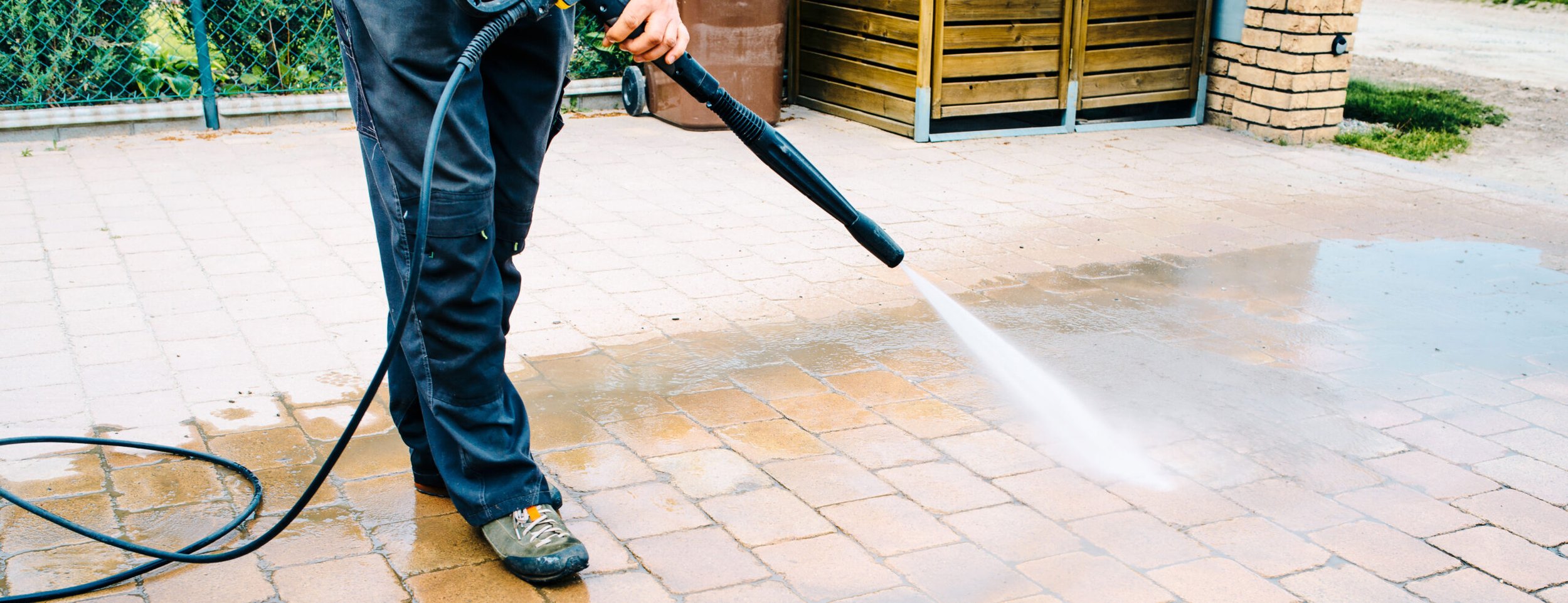
Power Washing
Power Washer Guidelines
Releasing pollutants directly into the storm drain system or a waterway violates the City’s Storm Water and Sanitary Sewer Use Ordinances as well as State and Federal Codes.
Waste water from power washing, without an approved written variance, shall not be discharged to the Storm Drain system.
Wastewater shall not be discharged into streets, storm drains or other outside drains unless a written variance is obtained and all requirements met.
Power Washing activities shall be in compliance with the City of Santa Rosa’s Storm Water Ordinance, Chapter 17-12. Additional enforcement, inspection, and/or incident resolution may be required by other City ordinances, codes, departments and/or other regulatory authorities such as, but not limited to, Regional Water Quality Control Board (RWQCB) and California Fish and Wildlife. It is the responsibility of the property owner/operator to know and follow all local and regional codes, including obtaining proper permits, for all work to be completed.
It is your responsibility to prevent soap, dirt, water and other materials from entering into storm drains. The purpose of storm drains are to carry rainwater away from developed areas to prevent flooding. Untreated waste water and the pollutants it carries flow directly into our creeks and rivers where it can harm aquatic life and impact our recreation and drinking water.
Stay in Compliance, Follow these steps:
For discharges directed to the sanitary sewer system, contact City of Santa Rosa Environmental Compliance at 707-543-3369 to determine if the job requires a wastewater discharge permit, a fee, and/or wastewater treatment prior to any discharge to the sanitary sewer system.
Once you have received approval, you may discharge the wastewater to the sanitary sewer. Sanitary sewer inlets are typically indoors and include sinks, showers, bath tubs, toilets, floor drains and outside building cleanouts. You can pump to a storage tank for later disposal to the sanitary sewer. When discharging wastewater to the sanitary sewer, a mesh strainer should be used to prevent debris from clogging drains. Obtain the property owner's consent.
Before beginning a job, block storm drains by using waterproof sand bags to create a barrier around storm drains, plugs or rubber mats to seal storm drain openings, or use vacuum booms or temporary berms to keep wastewater away from the storm drain.
Avoid using any soaps or chemicals. Even biodegradable soap is harmful to fish and other aquatic life. Biodegradable soaps are designed to quickly break down in a Treatment Plant, not in a creek.
For all exceptions, you may be able to divert wastewater to a landscaped area or storm drain by following this process:
Sweep the entire area to collect all trash for disposal into an appropriate trash receptacle;
Use absorbents (such as rags, absorbent mats, rice hull ash, cat litter, special clay absorbent) to pick up a minimal number of greasy or oily spills (large or multiple spills will require disposal to the sanitary sewer);
Sweep or vacuum up saturated absorbents;
Never use any soaps or chemicals. Hazardous material must NOT be present.
To discharge wastewater to a landscaped, dirt or gravel area, obtain the property owner's consent. Waste water may adversely affect landscaping. Check the slope and other physical characteristics of the area to avoid runoff to the street, storm drain or other outside drains. Wastewater must be directed onto an area large enough to contain all the water. If the soil is dry, wet it down before discharging to help wastewater soak into the ground.
If sanitary sewer and landscaping options are not feasible, written approval to discharge to the storm drain is required per individual occurrence. Written approval (via a temporary variance) will require all conditions noted above (item #5) to be met, proper filtration as noted in the tables are around all inlets, and site specific requirements. Written approval (of a temporary variance) may be requested from the City of Santa Rosa, Environmental Services Division, Storm Water and Creeks Section and must be kept on work / job site for duration of work performed.
Hazardous Waste Disposal of fluids containing materials such as automotive fluids, solvents, paint, pesticides, etc.:
Read cleaning product labels before disposing of wastewater. Follow use and disposal instructions carefully.
Check with the Sonoma County EcoDesk (707-565-DESK) for a list of approved hazardous waste recyclers and disposal sites. If you are a small business, call the EcoDesk to find out how you can dispose of hazardous waste at a local drop-off event (instead of hiring a hazardous waste hauler). Ask if you qualify for "Conditionally Exempt Small Quantity Generator" (CESQG) programs.
Releasing pollutants into the storm drain system or a waterway is prohibited by local ordinance, state, and federal law.
